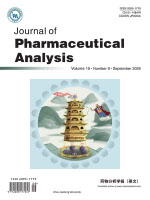2023, 13(5): 431-441.
doi: 10.1016/j.jpha.2023.03.008
Abstract:
DNA barcoding has been widely used for herb identification in recent decades, enabling safety and innovation in the field of herbal medicine. In this article, we summarize recent progress in DNA barcoding for herbal medicine to provide ideas for the further development and application of this technology. Most importantly, the standard DNA barcode has been extended in two ways. First, while conventional DNA barcodes have been widely promoted for their versatility in the identification of fresh or well-preserved samples, super-barcodes based on plastid genomes have rapidly developed and have shown advantages in species identification at low taxonomic levels. Second, mini-barcodes are attractive because they perform better in cases of degraded DNA from herbal materials. In addition, some molecular techniques, such as high-throughput sequencing and isothermal amplification, are combined with DNA barcodes for species identification, which has expanded the applications of herb identification based on DNA barcoding and brought about the post-DNA-barcoding era. Furthermore, standard and high-species coverage DNA barcode reference libraries have been constructed to provide reference sequences for species identification, which increases the accuracy and credibility of species discrimination based on DNA barcodes. In summary, DNA barcoding should play a key role in the quality control of traditional herbal medicine and in the international herb trade.



